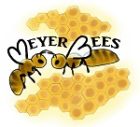Beekeeping has long been admired as both an art and a science — a fascinating blend of patience, care, and connection to nature. Whether you’re a beginner exploring the world of bees or an experienced beekeeper expanding your apiary, having the right beehive supplies makes all the difference. From selecting the ideal hive type to understanding what essentials every beekeeper needs, getting started the right way ensures your colony thrives for years to come.
Why Quality Beehive Supplies Matter
Bees are highly organized creatures, and the hive is their entire world — a space where they work, live, and produce honey. For that reason, quality hive supplies are more than just tools; they form the foundation for your colony’s health and productivity.
Every piece, from frames and foundations to protective gear, plays a vital role. Poor-quality materials can lead to contamination, moisture issues, or pest infestations. On the other hand, durable, well-built components provide bees with the right structure and environment to flourish naturally.
Understanding Beehive Types
Before looking for a beehive for sale, it’s essential to understand the different hive designs available today. The most common options include:
- Langstroth Hive – The most popular type, known for its removable frames, which make honey extraction and inspection much easier. It’s ideal for both beginners and professionals.
- Top-Bar Hive – A more natural design that allows bees to build comb freely. This style is perfect for small-scale or hobby beekeepers looking for simplicity and sustainability.
- Warre Hive – Designed to mimic a tree hollow, this vertical hive system is favored for its bee-friendly environment and low-maintenance setup.
Each hive type has its advantages, and picking the right one depends on your beekeeping goals, climate, and level of experience.
Essential Beehive Supplies Every Beekeeper Needs
Once you’ve decided on your hive, gathering essential beehive supplies ensures you’re well-prepared to care for your colony. Here’s a list of must-have items:
- Protective Gear: A bee suit, gloves, and a veil are essential for comfort and safety during hive inspections.
- Smoker: Helps calm bees and makes hive management easier.
- Hive Tool: A multipurpose instrument used to lift frames and scrape wax or propolis.
- Feeders: Useful during times when nectar is scarce to ensure bees get enough nutrition.
- Frame and Foundation Kits: Provide bees with a structured start for building comb efficiently.
- Queen Excluder: It keeps the queen confined to specific sections of the hive, making honey collection more manageable.
Investing in these basic tools helps reduce stress for both you and your bees while promoting a productive environment.
Where to Find the Right Beehive for Sale
When searching for a beehive for sale, consider not just the price but the quality and design. Look for hives made from untreated, durable wood that can withstand varying weather conditions. Well-crafted joints, tight-fitting covers, and smooth surfaces also help maintain hive hygiene and durability.
Before making a purchase, check if replacement parts or compatible accessories are easily available. This ensures you can maintain your hive efficiently over time without worrying about finding matching components later.
Tips for New Beekeepers
- Start Small: Begin with a hive or two to understand bee behavior and seasonal patterns.
- Learn Continuously: Beekeeping requires observation and adaptability. Attend workshops or connect with local beekeeping groups.
- Regular Inspections: Check hives every 7–10 days during active months to spot any issues early.
- Mind the Seasons: Bees need special attention during winter and periods of low nectar flow. Proper insulation and feeding are key.
With patience and the right setup, beekeeping can be a rewarding experience — offering not only honey but a deep connection to nature and biodiversity.
FAQs
1. What supplies do I need to start beekeeping?
You’ll need a beehive, frames, protective clothing, a smoker, a hive tool, and feeders. Starting with quality equipment helps ensure a healthy colony.
2. What type of beehive is best for beginners?
Beginners often begin with the Langstroth hive because it’s easy to inspect, widely available, and compatible with standard accessories.
3. How do I choose the right beehive for sale?
Look for durable materials, proper ventilation, and a design suited to your region’s climate. Make sure replacement parts are easy to find.
4. When is the best time to buy a beehive?
Late winter or early spring is the ideal time to buy a hive — right before bee season begins. This gives you time to assemble and prepare before introducing your bees.
By choosing the right beehive supplies and understanding your bees’ needs, you’re not just building a hive — you’re creating a sustainable home for one of nature’s most essential pollinators. With care and the right knowledge, your journey into beekeeping can bloom into a lifelong passion.
